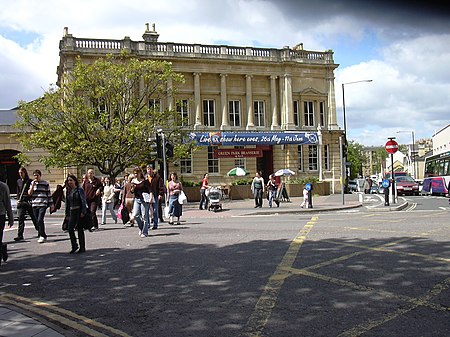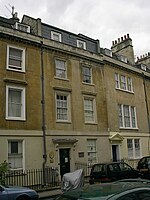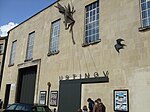Bath Green Park railway station
Beeching closures in EnglandDisused railway stations in Bath, SomersetFormer Midland Railway stationsFormer Somerset and Dorset Joint Railway stationsGrade II listed buildings in Bath, Somerset ... and 6 more
Grade II listed railway stationsHistory of Bath, SomersetPages with no open date in Infobox stationRailway stations in Great Britain closed in 1966Railway stations in Great Britain opened in 1870Use British English from March 2015

Green Park railway station is a former railway station in Bath, Somerset, England. For most of its life, it was known as Bath Queen Square.
Excerpt from the Wikipedia article Bath Green Park railway station (License: CC BY-SA 3.0, Authors, Images).Bath Green Park railway station
James Street West, Bath Kingsmead
Geographical coordinates (GPS) Address Website External links Nearby Places Show on map
Geographical coordinates (GPS)
| Latitude | Longitude |
|---|---|
| N 51.3815 ° | E -2.367 ° |
Address
Green Park Station
James Street West
BA1 2BT Bath, Kingsmead
England, United Kingdom
Open on Google Maps











